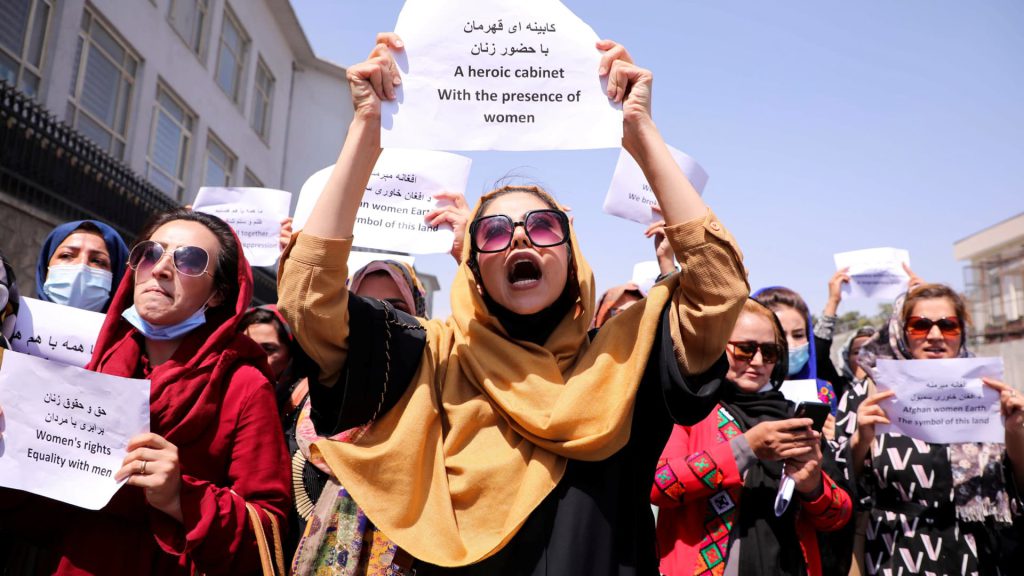
Kourosh Ziabari – Arab Gulf States Institute in Washington: The countrywide uprising precipitated by the death of 22-year-old Mahsa Amini in the custody of Iran’s morality police has been described as the first feminist revolution of the Middle East. Taking wing after years of inertia, Iran’s civil society was incentivized by its women to defy patriarchal structures and enforcement of laws that have been steeped in religious fundamentalism.
The “Woman, Life, Freedom” movement is less visible these days as street protests have waned in the face of a government crackdown, but the long-term social change set in motion because of the upheaval is consequential. Young and old Iranians rebelled against the government’s interference in their personal lives and choices. More important, the movement highlighted the latent potentials of women in societies that are more insular and less democratic.
On Iran’s eastern doorstep, as the Taliban consolidate power in Afghanistan, the regime is imposing new restrictions on women’s presence in public places and access to education. In November 2022, the Taliban banned women entering parks and fairs. And in December, they put in place new regulations booting female students out of universities, citing what the authorities called irreligious mingling of male and female students on university campuses, despite commitments they had made to allow girls access to school education.
But unlike the turbulent years of the “First Islamic Emirate of Afghanistan” that lasted between 1996 and 2001, and foisted immeasurable suffering on the Afghan people, particularly women, the hard-line measures adopted by the new iteration of the Taliban are facing resistance.
In reaction to the announcement of the ban on women studying at universities, numerous protests sprang up across Kabul and other cities with Afghan women chanting “Woman, Life, Freedom,” co-opted from the revolutionary movement in Iran, as well as their own rallying cry “Bread, Work, Freedom,” despite the risk of violent reprisal. On December 25, 2022, an 18-year-old Afghan girl staged a solo protest by standing in front of the gate of Kabul University, holding up a board displaying the Arabic word “iqra,” meaning “read,” which, according to Islamic teachings, was the first word of the Quran revealed to the Prophet Muhammad, accentuating the importance of literacy. She told AFP, “For the first time in my life, I felt so proud, strong, and powerful because I was standing against them and demanding a right that God has given us.” She stood there for 15 minutes before the Taliban guards forced her to leave.
A day earlier, a group of women demonstrated in the city of Herat to protest the suspension of university education for woman and demanded that the decision be reversed. The Taliban authorities used tear gas and water cannons to disperse the protesters, and the women responded by chanting “cowards.” Such scenes of bold confrontation were almost inconceivable three decades ago when the Taliban first reigned and purged women from all realms of social life but also ordained unbridled violence with impunity.
After the announcement, dozens of university lecturers resigned, expressing solidarity with women and protesting the Taliban decree. Male students at Nangarhar University in Jalalabad and Kandahar University refused to sit for exams in December to voice their support for the cause of their female classmates.
There’s a growing conversation suggesting that many of these acts of civil disobedience have been stimulated by the sweeping anti-government protests in Iran since September. On social media, conversations have drawn analogies between the Iranian women’s movement and the Afghan women’s acts defying the Taliban. The congruencies have similarly been tracked in media reports and commentary. Additionally, scholars are increasingly pointing to the harmony between the revolts instigated by the women in the two neighboring countries against the intolerance of their leaders.
Beyond geographic proximity, Iran and Afghanistan share expansive cultural, linguistic, and religious bonds, promoting strong ties between the two countries’ populations. People in both countries speak Persian dialects, and nearly 3 million Afghans, including 780,000 with refugee status, live in Iran. At the same time, they have similarly been inspired by their respective social movements and struggles for freedom. A case in point is the notable popularity of the late Afghan guerilla commander Ahmad Shah Massoud, whose resistance against the Soviet occupation between 1979 and 1989 and opposition to the Taliban from his Panjshir stronghold was lauded by many Iranians who regarded him as a transnational hero. In the same vein, his son, Ahmad Massoud, is admired by Iranians for his intrepid campaign to preserve the independence of the Panjshir Valley; particularly in the wake of the second Taliban takeover of Afghanistan, culminating in the August 2021 restoration of the Islamic emirate, Iranians showered him with praise on social media.
On a number of occasions since the eruption of protests in Iran, Afghan women gathered in front of the Iranian Embassy in Kabul in a show of unity. And the banners they held showed the source of their inspiration for protests. One placard during September 29 protests in Kabul read, “Iran has risen up, now it’s our time.” On multiple occasions, female protesters in Afghanistan have referred to the cause of the Iranian women as an impetus for their own movement, telling the media that they are heartened by the scenes they’ve seen in Iran.
The women-led uprising in Iran unified diverse groups of Iranians and drew support from across the world. It is now motivating Afghan women to pluck up the courage and push back against the Taliban regime as it strips them of their fundamental rights.
This article was originally published in Arab Gulf States Institute in Washington
